
Related
Topics
Guests
- Bryan Stevensonattorney who argued the Supreme Court case challenging juvenile life without parole. He is the founder and executive director of the Equal Justice Initiative.
- Azim Khamisafather of 20-year-old Tariq Khamisa, who was killed by a 14-year-old gang member, Tony Hicks, in 1995. Khamisa founded the Tariq Khamisa Foundation in his son’s memory. He co-signed an amicus brief on behalf of victim family members who oppose life without parole for children.
In a groundbreaking ruling on Monday, the Supreme Court ruled that states may not impose mandatory life sentences without parole on children, even if they have been convicted of taking part in a murder. The justices ruled in a five-to-four decision that such harsh sentencing for children violated the Eighth Amendment’s ban on cruel and unusual punishment. “[We’ve] been victims of the politics of fear and anger in this country for 40 years [with] tremendous investment into excessive sentences, mass incarceration,” says juvenile defense attorney Bryan Stevenson, who filed the landmark Supreme Court case. “Many of the people who have been brought into that transformation have been kids.” We’re also joined by Azim Khamisa, whose 20-year-old son Tariq was killed by a 14-year-old gang member, Tony Hicks, in 1995. Khamisa co-signed an amicus brief on behalf of victim family members who oppose life without parole for children. “The brain of a child is not formed at the age of 14,” Khamisa says. “So I think there is a lot of potential in these young offenders, that if we create the right kind of an environment … these kids can come back into society, and not only come back into society, but come back as contributing members.” [includes rush transcript]
Transcript
NERMEEN SHAIKH: We turn now to the issue of juvenile justice. In a groundbreaking ruling on Monday, the Supreme Court ruled that states may not impose mandatory life sentences without parole on children, even if they have been convicted of taking part in a murder. The justices ruled in a five-to-four decision that such harsh sentencing for children violated the Eighth Amendment’s ban on cruel and unusual punishment. The ruling does not mean the 2,500 juvenile offenders currently serving such sentences must be released, only that they now get the chance for parole.
The two cases at issue involved 14-year-old boys who had taken part in murders in Arkansas and Alabama. Justice Elena Kagan wrote for the majority that children still had unformed emotional and moral structures. In her decision, Kagan wrote, quote, “Mandatory life without parole for a juvenile precludes consideration of his chronological age and its hallmark features—among them, immaturity, impetuosity, and failure to appreciate risks and consequences.”
AMY GOODMAN: The court’s most conservative members dissented. Justice Samuel Alito said the ruling could lead to the release of young murderers who could kill again. In his dissent, he wrote, quote, “Even a 17 1/2-year-old who sets off a bomb in a crowded mall or guns down a dozen students and teachers is a [quote] 'child' and must be given a chance to persuade a judge to permit his release into society. Nothing in the Constitution supports this arrogation of legislative authority,” Alito wrote.
For more, we’re joined by two guests. We go to Montgomery, Alabama, to speak with Bryan Stevenson, who won the landmark Supreme Court case striking down mandatory life sentences for juveniles. He’s the founder and executive director of the Equal Justice Initiative.
And we’re joined by Democracy Now! video stream by Azim Khamisa. He co-signed an amicus brief on behalf of victim family members who oppose life without parole for children. His 20-year-old son Tariq was killed by a 14-year-old gang member, Tony Hicks, in 1995.
But let’s first go to Bryan Stevenson in Montgomery. You argued this case before the Supreme Court. Talk about its significance, Bryan.
BRYAN STEVENSON: Well, yes, we’re very encouraged by the court’s ruling. This is an important step forward. For 30, 40 years we have been sending children to die in prison in the United States. We’re the only country in the world that does that. Some of these kids were as young as 13 years of age when they were sentenced to life imprisonment without parole. And until the court struck down the death penalty for juveniles in 2005, this was an issue that got virtually no attention. So we’re really pleased that in the last three years the court has recognized that child status is critical and important, even in the criminal justice system, where for decades we’ve really ignored the plight, the status, the conditions, the challenges that children have in all communities with regard to sentencing. And so, it’s a really important step forward.
NERMEEN SHAIKH: Bryan, you mentioned that the U.S. is exceptional in putting children into prison for life. Why is it that the U.S. does that? I mean, how did that practice come about?
BRYAN STEVENSON: Well, you know, we’ve, I think, really been victims of the politics of fear and anger in this country for 40 years, and we’ve had this tremendous investment into excessive sentences, mass incarceration. Our prison population in 1972 was 300,000; today it’s 2.3 million. And many of the people who have been brought into that transformation have been kids. We lowered the minimum age for trying children as an adult in many states. In the late 1980s, early 1990s, we made mandatory transfer, mandatory sentencing a feature of the way we deal with kids. And at the same time, when the rest of the world has actually been recognizing that protecting children is a critical human right and adopting things like the [Convention] on the Rights of the Child, the U.S. has been an outlier. The United States and Somalia are the only two countries in the world that have refused to sign the covenant on the protection—on the rights of the child, which I think has undermined our integrity, our credibility and our reputation on human rights issues abroad.
AMY GOODMAN: I want to turn to Azim Khamisa. Can you tell us your own story, about your son Tariq, how he was killed, and the campaign you have waged since?
AZIM KHAMISA: Sure. Tariq was a student at San Diego State University, and he worked on Fridays and Saturdays as a pizza delivery man. It was the last delivery on a Saturday night, and he was lured to a bogus address in San Diego by a youth gang, and it was an apartment building. He knocked on many doors and found out that nobody had ordered the pizza, so he came back to the car, put the pizzas in the trunk of the car, and as he was about to leave the scene of the crime, he was accosted by four youth gang members. Three of them were 14 year old, and the leader of the gang was an 18-year-old who handed a nine-millimeter handgun to a 14-year-old and commanded, “Bust him, Bones.” Bones was his gang nickname. And he fired one round, which came through the open driver-side window and entered my son’s body under the left shoulder blade. The bullet traveled across the upper part of his chest. And, unfortunately, it was fatal. And he died drowning in his own blood a couple of minutes later—over a lousy pizza at the age of 20.
So, needless to say, it brought my life to a crashing halt. But I took a different response to the tragedy. This happened 17 years ago. I saw that there were victims at both ends of the gun. And I started with the premise that violence was a learned behavior. And if you accept that as a truism, then nonviolence can also be a learned behavior. So I ended up forgiving my son’s killer. And nine months after that, I started the Tariq Khamisa Foundation and reached out in forgiveness to the grandfather and guardian of my son’s killer. And now we work together to keep kids away from gang, guns and violence. And 11 years ago, I also co-founded another program called CANEI, which is Constant and Never-Ending Improvement, alongside with the National Youth Advocate Program, which is based in Columbus, Ohio. And they’re a fairly large nonprofit; they’re present in seven states. And here, we are actually an alternative to incarceration. And that particular program is already in seven cities, and we are having success in turning around youth offenders and bringing them back into society as contributing and functioning members.
So I’m really excited about the Supreme Court decision. I think it’s a step in the right direction, as Bryan mentioned. But I think, beyond that, I think that we need to look at youthful offenders as a resource, because the kid who killed my son is now 30. And he—and I forgave him and also told him, “When you come out, you can come join your grandfather and me,” and gave him some love and hope. And when he was 22 years old, he aced his GED in prison at the 94 percentile. He’s two-thirds of his way done with his first degree in child psychology, because he knows, when he comes out, he will join his grandfather and me. And in my heart of hearts, I know we’ve saved him. But I tried to get him out under the Schwarzenegger regime, not very successfully, because he’s still—he was actually given a sentence of 25 years to life with parole, but he doesn’t parole 'til he's 46 years old. But I look forward to the day, because I know that we’ve saved him, but he will save many other kids.
NERMEEN SHAIKH: Azim Khamisa, the boy you’re talking about, the boy who—teenage boy who was responsible for killing your son, was 14 years old at the time he did it, Tony Hicks. During his sentencing hearing, Tony asked for your forgiveness. Let’s just go to a clip of that.
TONY HICKS: On January 21st, 1995, I shot and killed Tariq Khamisa, a person I didn’t even know and who didn’t do anything wrong to me. I wish I didn’t have the type of life I had. I wish had a relationship with my father. I think about the warnings that my grandfather gave me, and I wish I had listened to my grandfather. At night when I’m alone, I cry and I beg God to let me out of here, promising that I will be a better person. I won’t mess up.
NERMEEN SHAIKH: Tony Hicks’s grandfather and guardian, Ples Felix, described the conversation he had with Tony in juvenile hall shortly after he murdered your son.
PLES FELIX: He just came over, and he sat in my lap, and he just started crying, and he started bawling, and he started screaming about how sorry he was. He said, “Daddy, I’m so sorry. I’m so sorry. I never wanted to hurt anybody. I’m so sorry for what I did. And I hope that Mr. Khamisa can forgive me for what I’ve done, and I hope you can forgive me for what I’ve done. I’m so sorry.”
NERMEEN SHAIKH: Azim Khamisa, that was Ples Felix, the grandfather of Tony Hicks.
AZIM KHAMISA: Correct. Yeah, we’re together, still together 17 years later. In fact, we are in Rapid City speaking at a conference that deals with youth violence. And it just shows you what’s possible. I mean, Tony is no longer about gang banging. He’s—we have footage of him when he was 26 years old. We use the clip that you just shared with your audience in our programs, and we also have two-and-a-half hours more of him when he was 26 years old. And you see the change in him. I mean, at 14, you can see the gang-banging mentality; at 26, he comes across as a monk—as a result of me forgiving him and giving him some hope.
And as I said earlier, that a child—you know, the brain of a child is not formed at the age of 14. I mean, research shows that the full brain is developed someplace in the middle twenties. So I think there is a lot of potential in these young offenders, that if we create the right kind of an environment—and I think the programs that I’m involved with, both in the foundation and the CANEI program, addresses that these kids can come back into society, and not only come back into society, but come back as contributing members. I mean, we have four full-time employees who are all ex-convicts that are so passionate that they don’t want other kids to follow in their footsteps. And Tony will be that, too.
AMY GOODMAN: In 2009, PBS’s Tim O’Brien interviewed Judge J. Rogers Padgett, a judge in Florida, on why he sentenced a 15-year-old named Kenneth Young to life in prison with no possibility of parole. Young helped a 25-year-old crack dealer pull armed robberies of hotels around Tampa Bay, Florida. Young would take down the video surveillance cameras and grab the cash while the boss held a gun on the clerks and barked orders. No shots were ever fired. This is Judge Padgett defending his ruling.
JUDGE J. ROGERS PADGETT: So, what we see is what we get in the way of a defendant. We get a person who shows no remorse. We get a person who is smiling in court, thinks it’s funny. We have a person who, while he is under consideration for a life sentence, is flipping signals to people in the gallery.
TIM O’BRIEN: He’s only 15, barely.
JUDGE J. ROGERS PADGETT: We have a person who gives no appearance of deserving any slack whatsoever in sentencing. So, we give him a life sentence.
AMY GOODMAN: That was Judge J. Rogers Padgett. Bryan Stevenson, as we wrap up this discussion, can you respond to what he said? Talk about the issue of race, when it comes to children who are in prison for life without parole. And also, what is the response of your clients? You argued this case. You won this case before the Supreme Court.
BRYAN STEVENSON: Well, I think what I’ve seen over 20, 25 years representing kids is that kids change, and the powerful story you heard earlier is just a testament to how we have failed many of the kids in our communities. We’ve allowed them to become hopeless. We’ve allowed them to be brought into violent environments and thrown them away. And we’ve got to change that. And that judge’s perspective, which ultimately did change, is one of the reasons why I think this fight is so important. Kids need to be oriented. They need to be inspired. They need to be energized. They’ve already been condemned, long before they’ve been arrested. Too many kids in this country believe, by the time they’re 13 and 14, that their lives have no hope, they’re going to die, or they’re going to die in prison. And that hopelessness is very much a part of what we are trying to respond to.
It would make no sense to condemn a child, in my view, to judge a child beyond hope, beyond rehabilitation, beyond recovery, when they’re still forming. And to say to any child that you’re fit only to die in prison, we think, is cruel. The fact that the overwhelming majority of the kids that we have condemned in this way are kids of color adds to the problem, adds to the injustice. And so, we’re excited to have an opportunity to kind of now fight for some hopefulness, for some recovery, for some rehabilitation, particularly in communities where poverty and marginalization and anger and violence and despair have already condemned and challenged the hope and limited the aspirations of too many children.
AMY GOODMAN: And finally—we have 15 seconds—for those who are now sentenced to life without parole currently, serving time, what happens to them?
BRYAN STEVENSON: They will be entitled to new sentencing hearings. We’re going to have to amass the resources necessary to provide legal assistance to all of those people, but I think there’s great enthusiasm, great hopefulness that this will become an opportunity to recover from some very extreme and some very unjust outcomes.
AMY GOODMAN: Bryan Stevenson, we want to thank you very much for joining us from Montgomery, Alabama, the executive director of the Equal Justice Initiative. Bryan is the attorney who argued the Supreme Court case challenging juvenile life without parole. He won. Also, Azim Khamisa, thanks so much for being with us. Again, his son Tariq was 20 years old when he was killed by a 14-year-old gang member named Tony Hicks. He founded the Tariq Khamisa Foundation in his son’s memory and co-signed an amicus brief on behalf of victim family members who oppose life without parole for children.
This is Democracy Now! When we come back, Democracy Now!’s Sharif Abdel Kouddous joins us to talk about the first democratically elected president of Egypt. Stay with us.

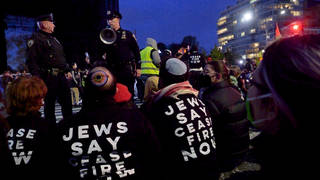
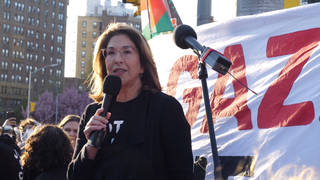
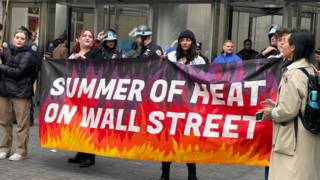
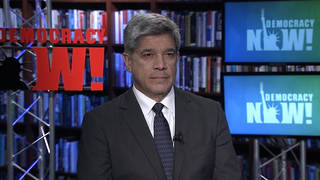





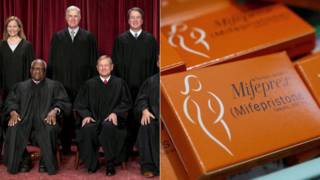

Media Options